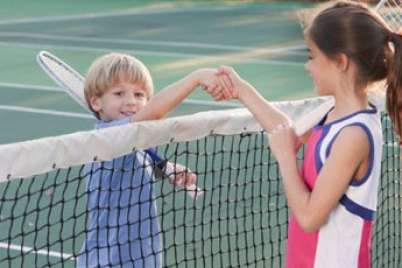
Multisport training helps Vancouver swim team be better athletes
As a young kid growing up in Canada, three-time Olympic swimmer Brian Johns doesn’t remember much talk about physical literacy. Kids just played sports. Maybe they specialized in one. Maybe they didn’t.
“My dad was an all-around athlete; therefore, he put me and my brother into five or six different sports,” Johns says. “We both decided to focus on swimming, but we came to the sport in different ways.”
Now, as the head coach for the Vancouver Pacific Swim Club, Johns sees the value in kids trying lots of different sports throughout childhood. Each sport teaches a kid something new, but, like a jigsaw puzzle, the pieces all fit together.
“To dive effectively in swimming, you have to be a great jumper, but an athlete might learn that better in a volleyball context. Basketball players need aerobic conditioning to play full games, but they might build that base in swimming,” Johns says.
“By exposing athletes to many different sports and activities, they are learning many movement skills necessary for success in the sport they end up choosing.”
That’s the reasoning behind a recent partnership between the Vancouver Pacific Swim Club and the University of British Columbia’s Active Kids program.
A trial program geared toward young swimmers was launched in the fall of 2016. It was such a success, it became part of both the winter and spring programming.
Part of UBC’s School of Kinesiology outreach programs, the Active Kids classes are geared toward children ages one and a half to 18 years. They operate seven days a week from 9 a.m. to 10 p.m., and they are particularly popular because they are recreational and non-competitive, says Dylan Brown, program manager for Active Kids. They’re simply about getting kids moving in a variety of ways: jumping, running, balancing, stretching.
Between 40 and 50 young swimmers from the club participate in the Active Kids gymnastics classes twice a week, every week, for three months.
“One of our driving philosophies is to get as many children as possible having positive experiences in sport and trying a range of activities,” Brown says.
“Learning the fundamentals — running, kicking, throwing, catching, safe landings, agility, balance, coordination — these things are so important for kids to learn because it gives them the full package, what they need to be active for life.”
So far, so good. Jason Chugh is an assistant coach with Vancouver Pacific Swim Club. He says he has already noticed an improvement in the performances of the young swimmers. “It’s what you’d expect: better coordination, better abilities in the pool, so on and so forth,” Chugh says. “It’s all incremental, right? You see it as a slow progression.”
Slow, perhaps, but important. Not only are the kids swimming better, they’re gaining confidence and learning skills that they can use for the rest of their lives. “Multisport development is an important part of the club’s philosophy,” he adds. “It’s about developing well-rounded athletes. It’s more of a holistic approach.”
And, notes Johns, if a kid does decide to specialize, and perhaps one day go professional, a multi-sport approach will actually help them. “When they do choose to focus on a single sport eventually, it is a safe bet that they are choosing it because it is the sport they are enjoying the most, which will help ensure the long-term mental health of the athlete as they reach higher levels of competition.”
Down the road, Brown hopes the project will create kids who are active for life, not just active as children. “Specializing in one sport doesn’t necessarily set a kid up to be confident and motivated to take part in other physical activities as they get older,” he says.
“The goal is to be as physically active and healthy for as long as possible.”





